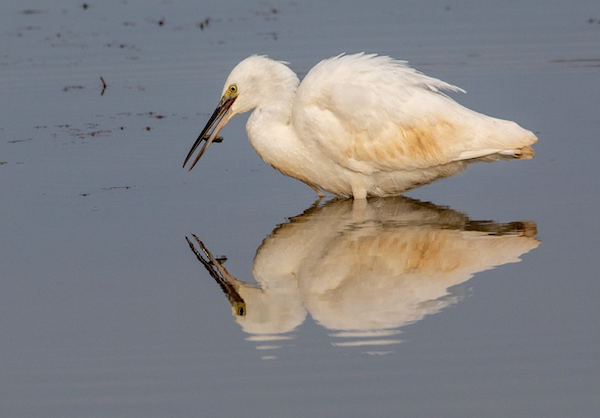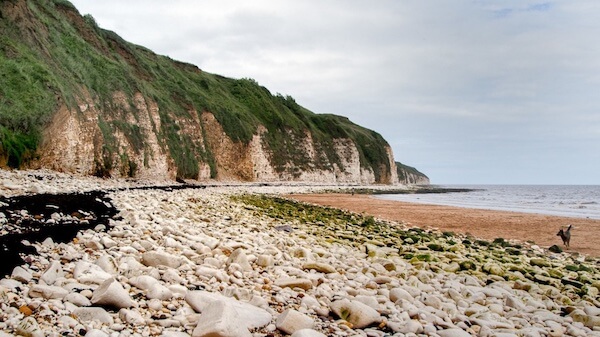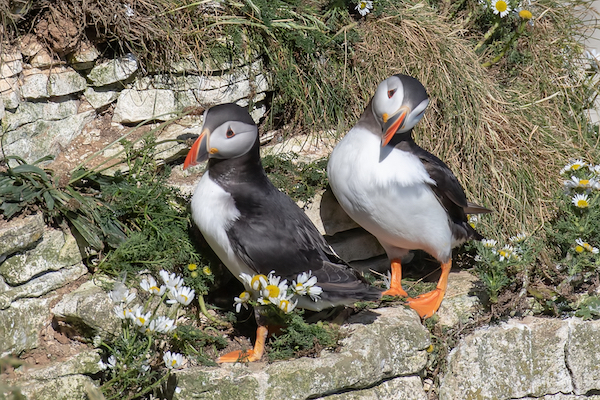- Home
- East Yorkshire
Nature on the East Yorkshire Coast
As often as we can, we heed the call of the East Yorkshire coast and head for the cliffs to indulge in a spot of wildlife and nature photography.
As well as being the largest county in the UK, Yorkshire is also one of the most beautiful. The East Riding offers stunning landscapes and incredible wildlife.
My husband traveled the Pennine Way and completed the Coast to Coast Walk in his 20s, but we are both somewhat older now, so stick to shorter routes.
The East Yorkshire coastline stretches from Spurn all the way up to Flamborough and offers all sorts of landscapes: from long sandy beaches to dramatic cliffs.
Spurn Point - the start of the East Yorkshire coast
 Egret behind the visitor centre, Spurn Point
Egret behind the visitor centre, Spurn PointSpurn Point (also known as Spurn Head) marks the start of the fast-eroding Holderness Coast. As the sands drift, so does the point, a narrow spit of land with the Humber on one side and the North Sea on the other.
From the Point you can look out over the huge expanse of the Humber estuary and on clear days can see across to the Lincolnshire coast.
The mix of mudflats and sand attracts many birds between September and March and is a great place to visit if you're a birdwatcher, or just enjoy seeing huge flocks of birds on the move.
However, the most popular time to visit is during the spring and autumn migration when the variety of birdlife is at its peak.
It is no longer possible to drive down to the point, but it is a lovely walk as long as you return before high tide to avoid becoming stranded.
However, there are shorter walks around the village of Kilnsea if you don't feel like the 7-mile walk across the sands.
It is important to be alert to the coastal erosion in the area. Take heed of any danger signs, as they are there for your safety! Walking too close to the cliff edge should definitely be avoided.
In addition to the birds there is plenty of other wildlife to be seen such as hares, roe deer, and foxes.
Flamborough Head
 Danes Dyke beach, around the corner from Flamborough Head
Danes Dyke beach, around the corner from Flamborough HeadFurther north is Flamborough Head which has not one but two lighthouses.
As you approach the Head, you pass the older chalk lighthouse from 1674, which was restored in 1996 despite never being used.
Taking pride of place on the Head is the "new" 1806 building, which was manned until 1996 and is still in service. A footpath leads past this lighthouse to the end of the head.
Flamborough is also famous for its chalk cliffs, eroded by the sea to form arches on either side of the beach. Whichever way you descend, via the road or the cliff path, the walk back up will test you!
From mid-April to mid-July during the breeding season, you can enjoy watching seabirds like puffins, razorbills and guillemots. Don't forget your binoculars for the best views.
On a clear day, you can look out from Flamborough across Bridlington Bay and see as far as Whitby on the North Yorkshire coast.
Bempton Cliffs

Bempton Cliffs, a couple of miles further up the coast, is home to thousands of seabirds.
Here you can view the largest Gannet colony in England between March and September. Puffins, Guillemots, Razorbills, and Fulmar also visit for the breeding season.
Viewpoints are situated along the top of the cliffs allowing for a wonderful wildlife photography experience.
As you can see the birds from land, you avoid the risk of booking a sea trip only to find it canceled due to bad weather.
There is still the option to go out on a boat trip from the seaside resort of Bridlington to see the birds from sea level if you wish.
My advice is if you are in the vicinity for more than a day, leave the boat trip till the end if you are at all frightened of heights. When you look up at the viewpoints atop the cliffs they seem a VERY long way up which might put you off going up there afterward!
The RSPB visitor centre at Bempton provides information about the birds, along with a shop and cafe.
Seating is provided outside so you can still enjoy birdwatching while you eat your lunch. Watch out for the Tree Sparrows with their black cheek spots, but keep a careful eye on the Jackdaws or they may steal your food.
Writing this page has made me yearn for a trip to the East Riding of Yorkshire again. Maybe soon.

About the Author
Carol is a UK-based wildlife photographer and nature writer with a passion for peaceful walks, patient observation, and capturing life’s quiet wonders.
Through her lens and words, she shares the stories of the natural world — from bluebells and butterflies to birds like the great crested grebe.
Get closer to UK nature
Subscribe to Wild Lens!
Want to discover more hidden walks and wildlife moments?
I’d love to share my latest nature finds, photo tips, and peaceful walk recommendations with you.
💌 Join my newsletter Wild Lens—it’s free, occasional, and always rooted in a love of the natural world.
Subscribe below and come exploring with me.


